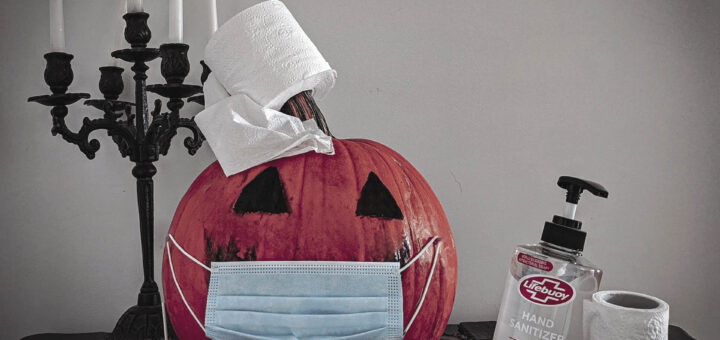A brief history of Halloween during unprecedented times

By Ed Ghost, Contributor
Halloween has had many faces over the past 120-something years of Canadian tradition. What started out originally as a centuries-old Celtic pagan tradition, Halloween followed Irish immigrants to our shores in the mid-1800s, shapeshifting from marking the end of summer harvest; to a ceremony of warding off evil spirits; to costumes, candies, and celebration.
Canadians have also added their fair share to the history of Halloween as we know it — the phrase trick-or-treat is said to have originated in Alberta in the 1920s, and a newspaper article, written in 1911, from Kingston, Ont., has the first printed evidence of children dawning costumes and going door-to-door looking for something good to eat.
But I think everyone can agree that this Halloween season feels different. There have been countless conversations, news articles and hearsay about the best way to proceed — is it still okay for kids to swarm the streets and ritualistically gather candy from strangers? How will anyone be able to ethically “TP” houses after The Great Toilet Paper Shortage of 2020? Can we still maintain our beloved spooky season without being socially irresponsible? Is Halloween cancelled? These are unprecedented times, after all…or are they?
In 1918, right near the end of World War I, the world was plagued with another influenza pandemic, problematically nicknamed “the Spanish flu.” The mortality rates were dire, and its effectiveness was heightened because international travel had just become more easily accessible than ever before. Canada adopted social distancing and Alberta required the use of facemasks. According to an article in the Canadian Encyclopedia archives, in Regina people could be fined for publicly coughing or sneezing. Does any of this sound familiar?
Back in those days, Halloween as we know it was less about children and candy, and more about adult parties and the occasional mardi gras-esque street celebration — oh, and it was about pranks. Lots and lots of pranks. Nobody was safe.
Some cities tried to ban or discourage Halloween gatherings altogether and others tried to mandate wearing surgical masks along with any costumes they were wearing. Almost everywhere, there were already bans on large gatherings in effect. In most cities, people heeded the warnings and Fright Night waited patiently for its turn in the coming Octobers, slowly evolving into the form that we know and love today that involves way more chocolate.
Just a few short years ago — 78, to be exact — the world found itself in yet another world war. World War II shapeshifted the course of history in almost every way imaginable, and right at its height there was rationing and shortages of, well, everything — including sweet, sweet sugar. Kids in Canada and the U.S. were discouraged from trick-or-treating from 1942 to 1947.
Five years without yelling for candy while dressed as *insert pop culture icon here* is a long time, especially considering the holiday was just starting to pick up steam in its modern form; and was very nearly derailed and forgotten about.
Luckily for us, the combined effort of cartoons, comics and the big candy conglomerates themselves made a mad dash to advertise the fun of trick-or-treating and dressing up as much as they possibly could the moment the sugar rations ended, and it worked! Halloween was saved once more. Gosh, isn’t marketing towards children amazing?
If you’re like me, then regardless of season, every day is Halloween, and like I mentioned, the holiday has been here a long time. The world as we know it is a constant ebb and flow, and Halloween has found a way to stay relevant and fun no matter what (literally) thousands of years have thrown at it.
This year might be different for us, and we may have to adjust, but Halloween will be there when we are fully ready again — watching, waiting, in the shadows of the moonlit night, ready to fill your bones to the brink with fright.




